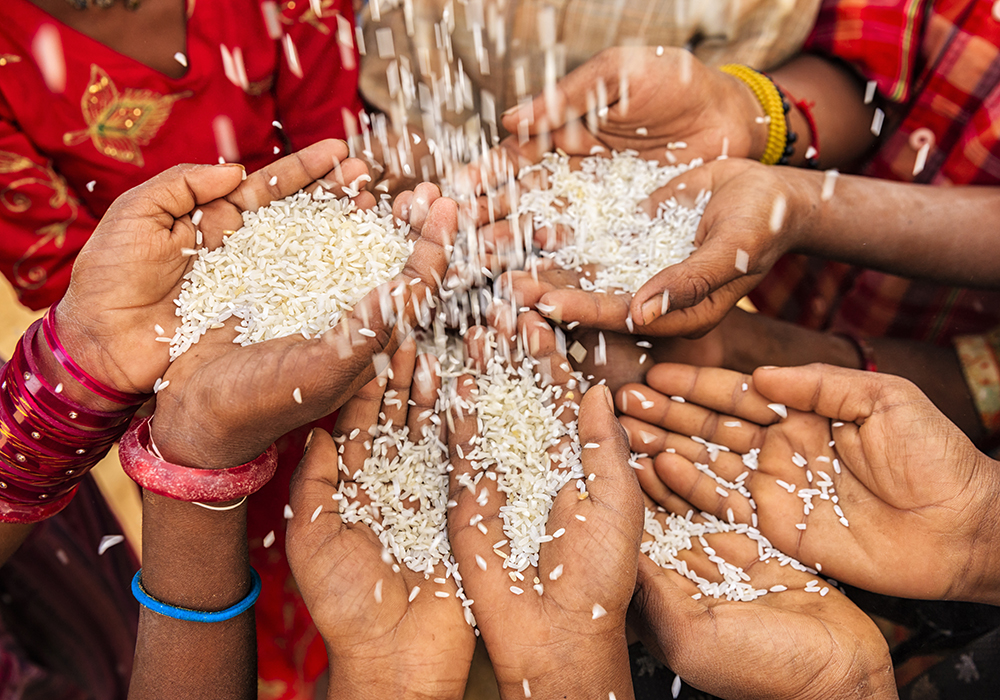It was a bad week for the world’s poorest people as Russia’s attacks against Ukraine’s grain export capabilities drove up wheat prices and India halted exports of some types of rice because of worries about an uneven monsoon.
These events threaten to worsen food cost inflation, which is a global problem.
India’s export halt was limited to its non-basmati white and broken rice, which accounted for about 10 million tonnes of a total of 22 million tonnes of Indian rice exports last year.
Read Also

Trump’s trade policies take their toll on Canadian producers
U.S. trade policy as dictated by president Donald Trump is hurting Canadian farmers in a multitude of ways.
India is the world’s biggest rice exporter. The government is worried that production could be dented by the erratic monsoon and it wants to limit exports to guarantee adequate amounts for domestic use.
The monsoon started off slow in June but late in the month it dumped too much rain in northern areas, while areas in the east have below normal rain.
There was flooding in the north, forcing some farmers to reseed their rice.
India’s international rice customers include poor countries in Asia and Africa that have already been struggling with some of the highest rice prices in 10 years.
The news came on the heels of Russia backing out of the agreement that allowed Ukraine to export grain by ship through the Black Sea. It then started to pound Ukraine’s port infrastructure with missiles and explosive drones and threatened to treat any ship sailing to Ukraine’s ports as potentially carrying weapons and therefore subject to boarding and inspection.
Grain markets were initially unmoved by Russia’s rejection of the Black Sea agreement, but then panicked when explosives rained down on infrastructure around ports at Odesa, Ukraine’s main gateway to the sea.
By week’s end, traders were thinking that the port damage was less than initially assessed and prices retreated a little.
However, over the week the Chicago soft wheat contract rose 5.4 percent and Minneapolis hard red spring contract gained 4.8 percent.
The market remains on edge and it is hard to predict how the situation will affect wheat and corn prices in the coming months. The drought in large parts of the Canadian Prairies is also supporting wheat prices.
There were lots of comments in the news that the poorest and most food-deficient people on Earth would be hurt most if Ukraine grain was not available.
That is true but it is not because Ukraine supplies all the grain for poor countries. Rather, grain prices generally rise when Ukraine’s exports are threatened, making all grain regardless of origin more expensive for people in poor countries and for international food aid programs.
According to the United Nations Black Sea Grain Initiative Joint Co-ordination Centre, in the July 2022 to July 2023 period, 33 million tonnes of grain and other foodstuffs were shipped from Ukraine under the agreement.
About half was corn, 27 percent wheat, 11 percent sunflower seed and 10 percent other products.
For corn, 49 percent went to developed countries and 51 percent to developing countries.
For wheat, 35 percent went to developed countries and 65 percent to developing countries.
The biggest buyer of Ukraine corn and wheat was China, taking eight million tonnes, followed by Spain at six million, Turkey at 3.2 million and Italy at 2.1 million.
Still, Ukraine wheat is important to food aid.
Of the 33 million tonnes that Ukraine shipped, the United Nation’s World Food Program bought 725,000 tonnes of wheat for Ethiopia, Yemen, Afghanistan, Sudan, Somalia , Kenya and Djibouti.
Another of the world’s food staples is rice and its price is higher than usual because of several weather issues, including last year’s severe flooding in Pakistan, drought and heat in southern China and drought in California.
In 2021-22 and 2022-23, global consumption outstripped production, causing year-end stocks to fall. Analysts had hoped production would bounce back this year, but even then the forecast was that it would be shy of consumption, resulting in another drop in year-end stocks.
But now, with the uneven monsoon in India and the strengthening El Nino in the Pacific, worries are rising that crops could disappoint.
El Nino tends to deliver drier-than-normal weather to Southeast Asia.
Rainfall this summer in Thailand, the world’s second largest rice exporter, is already lower than needed, but there were heavy downpours in some areas last week.
Thailand’s government has advised rice farmers to limit their cultivation to only one crop cycle this year to conserve water.
The El Nino is likely to continue to affect weather into 2024 and could have a worse impact on rice production next year.
But it is not all gloom and doom for the world’s crops.
China’s corn and soybean region in the northeast recently received important rain.
Argentina’s wheat farmers, who saw drought halve their crop last year, finally saw rain in recent weeks. They are wrapping up seeding and hope El Nino, which tends to deliver wetter than normal conditions, will live up to its reputation.















